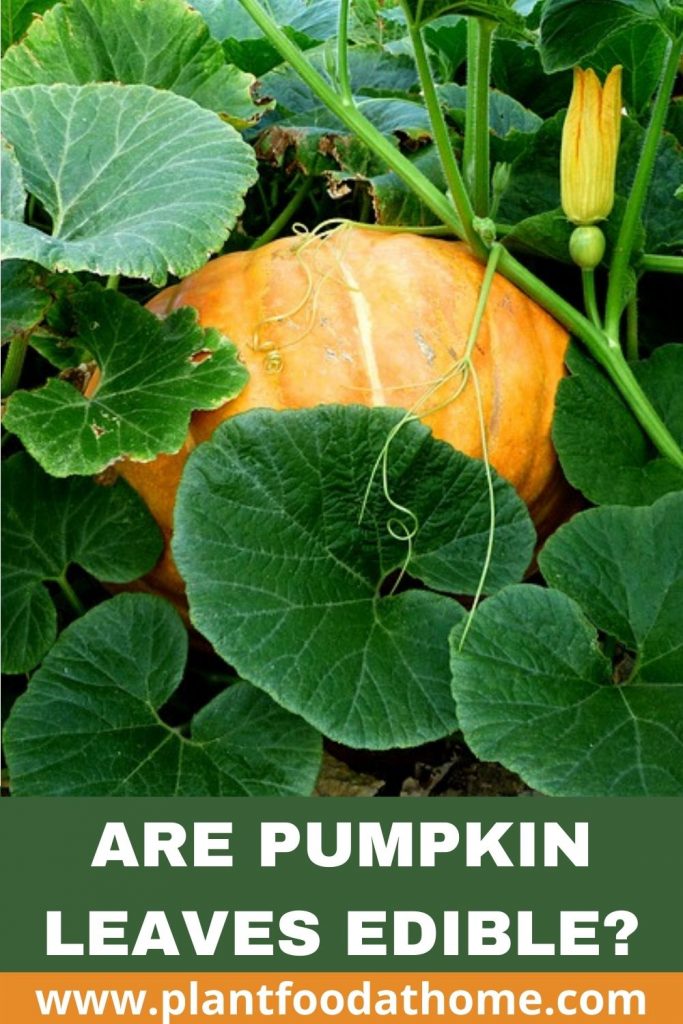There’s nothing in your garden that says fall more than some delicious pumpkins. While some people prefer going on annual trips to a pumpkin patch to prepare for autumn, pumpkins are actually great fruits to grow in your garden and use for some truly delicious dishes. But can you eat pumpkin leaves?
What many people probably don’t know is that pumpkin leaves are edible and just as delicious as the pumpkin itself!
Read on as we explore why eating pumpkin leaves is the key to harvesting more from your garden and exactly how to eat pumpkin leaves.
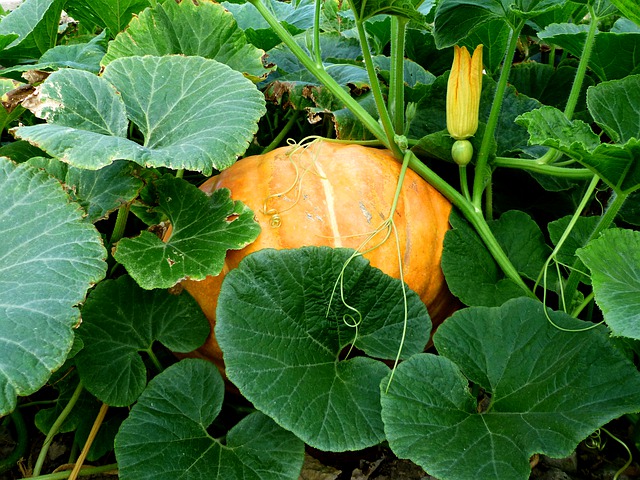
Table of Contents
You Can Eat Pumpkin Leaves
Pumpkin leaves are indeed edible. And now you know your garden can produce even more food for you to eat. By eating pumpkin leaves, you have an additional source of green veg at your fingertips for you to harvest throughout the pumpkin growing season.
Pumpkins are famous (or infamous) for their creeping vines that can quickly take over a garden if they aren’t properly maintained. The big, spiky leaves surrounding the pumpkin are heart shaped and typically dark green in color. These leaves are edible and full of nutrients.
There are lots of old recipes to craft delicious meals from pumpkin leaves. Despite this history, many people fail to take advantage of their pumpkin leaves and just let them wither. Boy, are they really missing out!
What do Pumpkin Leaves Taste Like
The taste of pumpkin leaves can be described as a mix between a few different green vegetables such as spinach, broccoli and green beans. These flavors are all fairly mild green veg which is how pumpkin leaves taste.
Are Pumpkin Leaves Nutritious?
You’ll be happy to know that pumpkin leaves are very healthy and can provide you with tons of vitamins and nutrients. They are high in calcium and iron, which promotes healthy bones and teeth in the body as well as growth and development. This makes them an ideal treat for all ages! Pumpkin leaves are also high in Vitamin A and Vitamin C, which is good for eyesight and healthy skin.
Thanks to their high iron content, pumpkin leaves are good for the heart and have been shown to strengthen the immune system. They also have plenty of fiber, which can promote digestive health.
In short, pumpkin leaves are incredibly nutritious and help provide your body with everything it needs to be healthy!
Harvesting Pumpkin Leaves for Eating
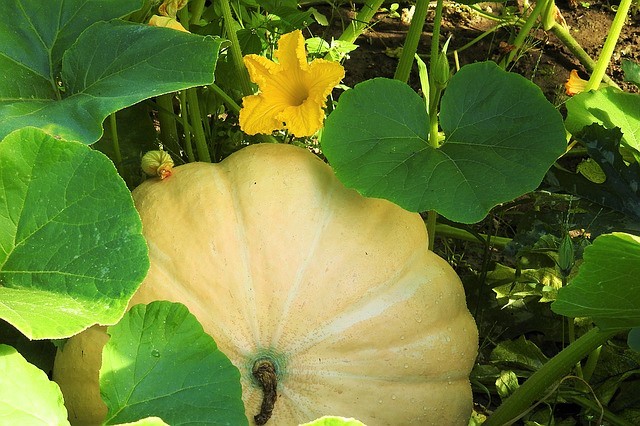
The key to harvesting pumpkin leaves for eating is to pick them at the right time. A good rule of thumb is to harvest pumpkin leaves for eating when they are no bigger than your hand.
You can harvest leaves while your pumpkins are still growing, and in fact many people find that the young leaves of growing pumpkins are the tastiest.
Be careful not to take every single one and choose alternating, small leaves in order to make sure that the pumpkin is still able to grow. It’s also important that you don’t accidentally sever the vine from the pumpkin.
If you’re lucky, you’ll be able to harvest leaves several times as your pumpkins grow before doing one last haul of the season.
How to Prepare Pumpkin Leaves for Eating
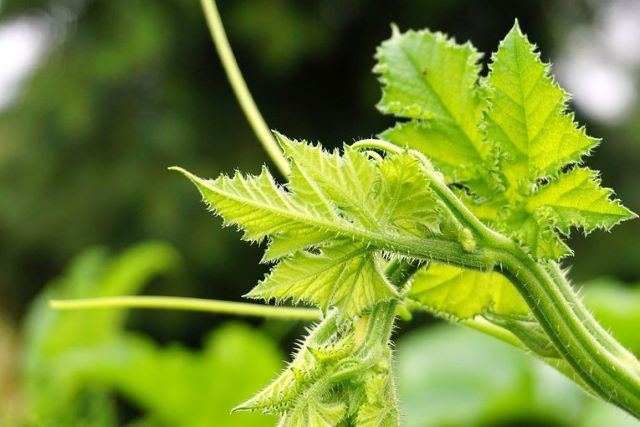
One of the main reasons that many people might assume pumpkin leaves aren’t edible is because of the spiky outside layer and the thick spine that holds the leaf together. These defenses can seem daunting at first, but they are removable and should not be a deterrent in becoming a pumpkin leaf fan.
Preparing pumpkin leaves can be time-consuming, but the process is not especially difficult. Play some music or a podcast in the background and get to work!
The first thing you should do is clean the leaves thoroughly with running water to remove any soil or pests.
For cutting through the outer layer, the best thing to do is to hold the stem of the leaf, turning the leaf upside down. The stem of the leaf is hollow and fibrous, so you can use your fingernail to puncture the top of the stem and peel some fibrous strands down. Peel the strands off of the stem and the back of the leaf. Continue this process until you have removed most of the outer layer of fibrous material from the stem and back of the pumpkin leaf.
Remember pumpkin leaves shrink during the cooking process when exposed to heat (much like spinach) so it’s best to prepare a large pile of leaves for cooking.
How to Cook Pumpkin Leaves
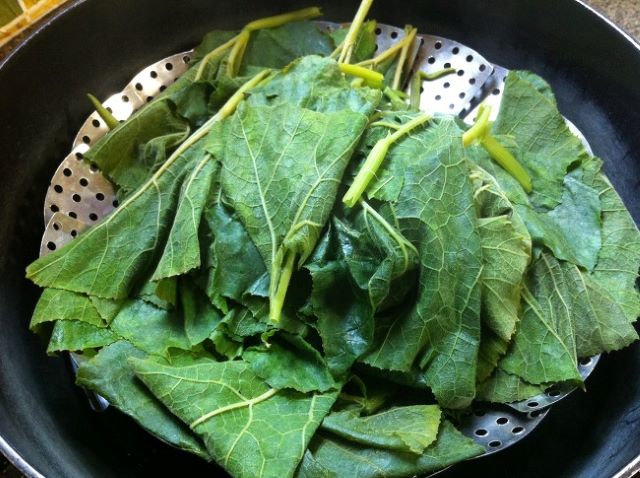
Cultures all over the world have been cooking with pumpkin leaves for generations, particularly in Africa and India. Pumpkin leaves can be a good addition to any dish, even as a topping or garnish. As mentioned in the previous paragraph, pumpkin leaves shrink during the cooking process so you may need to prepare a larger pile in preparation for that shrinking. That being said, pumpkin leaves can be cooked like many other greens. You’ll be surprised at how easy it is to make a delicious dish!
You can substitute pumpkin leaves for other leafy green vegetables to mix and match new recipes. An easy first attempt would be to saute your pumpkin leaves with oil to use as a topping or mix for a pasta dish or a dip. Add garlic, a drizzle of lemon juice and sprinkle of grated parmasan cheese for a delicious green vegetable side dish.
When done correctly, pumpkin leaves can become very creamy and a delightful addition to any dish. While they are a bit time-consuming to prepare – pumpkin leaves can be cooked and used in a variety of dishes just like many other leafy greens.
Interestingly enough, many people find that pumpkin leaves deliver the same nutritional benefit of other greens without bitterness. Their surprisingly sweet flavor makes them a huge hit!
Recipe Ideas Using Pumpkin Leaves
Now that we’ve gone over some of the cooking process, let’s review some delicious recipes that use pumpkin leaves that you could create. One of the great things about pumpkin leaves is that they’re used by many different cultures, so there is a wide range of recipes just waiting to be tried.
In West Africa, pumpkin leaves or other gourd leaves are referred to as Ugu and are used in a variety of hearty soups and sauces. Ugu soup or pumpkin leaf soup is a thick soup that can be eaten with bread or rice, and mixes prepared pumpkin leaves with meat and other seasonings.
Pumpkin Leaves (Ugu) Soup – from Immaculate Bites
Pumpkin leaves can also be a new addition to a variety of different curries and soups from all cultures. Don’t be afraid to experiment and add some sauteed leaves to one of your favorite dishes or Asian stir fries such as the recipe below.
Asian Stir Fried Pumpkin Stems – from Recipe Yum
Pumpkin leaves pair well with peanut sauces or coconut based curries, making them a welcome part of so many different recipes.
Kumro Pata Torkari (vegetable curry) – from Playful Cooking
Pumpkin Leaf Thoran – from Packakam
They can also be simmered in soup bases or with tomatoes. Another popular technique is to simmer the pumpkin leaves with some diced pumpkin as part of a vegetable stew. This truly lets you use every bit of the plant for a yummy final product.
Pumpkin leaves can also be made star of the show by battering them and frying – yum!
Fried Pumpkin Leaves – from Platter Share
Tips for Growing Pumpkin Leaves
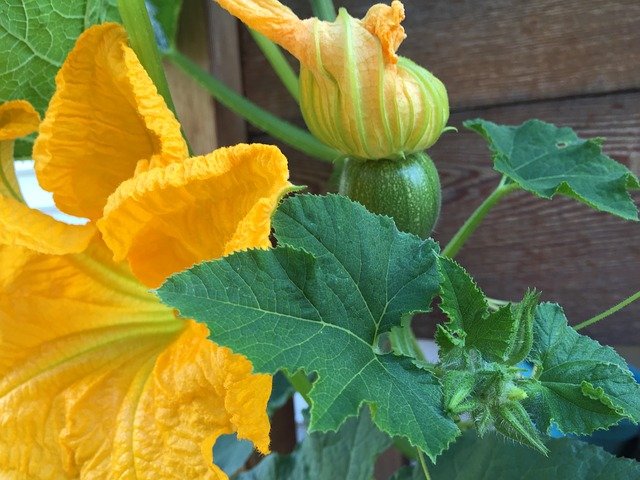
Hopefully, you’re now eager to try out some pumpkin leaves of your very own! If you’re not already growing your own pumpkins, we have a detailed guide to growing pumpkins here. But here are a few tips to grow the best pumpkin leaves you can!
Of course, for successful pumpkin leaves, you need successful pumpkins. Growing techniques for pumpkins can be similar to other veggies like squash. They need plenty of sun but also protection from the wind and frost. Covering them with a tarp during heavy rain or wind can protect the pumpkin and the leaves from any damages. Make sure your pumpkins are planted in well-drained soil and get plenty of water, and you’ll soon have some gorgeous pumpkins and pumpkin leaves of your very own.
Oftentimes, gardeners are more worried about the final product of the vegetable itself and less worried about the leaves and other offshoots. This is very common, and makes sense. However, now that you know pumpkin leaves can be just as edible and delicious as the pumpkin, it’s important to make sure the leaves are also healthy and protected.
Check in on your leaves often for new signs of growth. As pumpkin leaves get bigger and stay on the vine, they tend to become more bitter. Avoid this by selecting young pumpkin leaves to eat. This means you can check in on your pumpkin and monitor the growth of any new leaves. Trust your green thumb when it comes to caring for and protecting pumpkin leaves, and you’ll be soon rewarded.
Conclusion
The secret is out – pumpkin leaves are edible! Now that you know how to utilize this overlooked aspect of your pumpkin plant, don’t be afraid to get started. Happy growing and eating!
Some of My Favorite Kitchen Items:
Further reading:
- The 7 Growth Stages of a Pumpkin: From Seed to Harvest
- How To Eat Chayote (Choko) With Recipe Ideas
- Coconut Curry Pumpkin Soup Recipe With 3 Ingredients
- Halloween Pumpkins: Carving, Decorating and Eating
- 7 Causes of Dying Pumpkins with Solutions
- Pumpkin Flowers But No Fruit? 8 Causes and Solutions
- Can You Eat Radish Greens? (And How to Eat Them)
- Eating Carrot Tops With Recipe Ideas
- Eating Passion Fruit Leaves With Recipe Ideas
- Quick Pickled Radish Greens Recipe
- Tips For Eating Dandelion Greens, Flowers, and Roots
- Eating Warrigal Greens: Cooking and Recipes Ideas
- Eating Beet Greens With Recipe Ideas
- Eating Sweet Potato Leaves with Recipe Ideas
